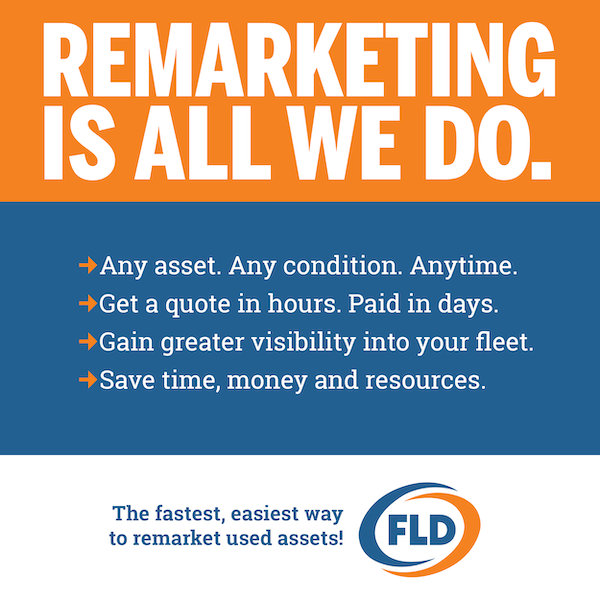
By Mark Boada, Executive Editor
Last year, a survey conducted by the National Council of State Fleet Administrators (NCSFA) found that government fleets could do more to improve their safety programs.
Acknowledged as one of the most influential women in fleet, Kathi Croze worked in sales for fleet and accident management services at The CEI Group, lastly as regional sales manager for government and corporate fleets. Now an independent consultant with Mercury Associates, in this interview she shares her insights into why government fleets fall behind corporate fleets when it comes to driver safety programs.
In general, how do government fleet driver safety programs compare to corporate programs?
I think it comes down to how government fleets differ from corporate fleets in terms of the vehicles and drivers.
For one thing, corporate fleets tend to be driver-centric while government fleets are more vehicle-centric. Corporate fleet drivers may be provided a company car as a benefit of employment or in connection with their job title. Alternatively, they can be reimbursed for using their own personal vehicle. This means each driver is usually using the same vehicle every day.
In a typical municipal fleet – whether law enforcement, trash collection, transportation services, maintenance, fire protection – the vehicles are shared by different drivers on different shifts. So, when a vehicle is damaged, unless the driver who was behind the wheel reports it, it’s difficult to identify the driver who was involved. This makes It harder for a municipal manager to manage a driver-based safety program.
A second difference between corporate and government fleets has to do with the defined responsibilities of the fleet manager. In the corporate world, in addition to acquiring and maintaining the fleet, fleet managers are usually responsible for controlling costs and avoiding risk. One approach taken is to reduce the number of crashes by ensuring that their drivers are well trained in the safe operation of their motor vehicle. This sends the message that the company cares for the employee and wants them to be safe.
For the most part, though, the role of the government fleet manager is to keep the vehicles properly maintained and safe to drive. When it comes to reducing accident repair expenses, their primary focus is to concentrate on repairs that affect the safe operation of the vehicle and, in some cases, to avoid those that only make the vehicle look better. In government fleets, safety and risk management are typically managed outside the fleet department, to the risk or safety department. In most cases, fleet isn’t empowered to establish driver safety policy or to authorize driver safety training.
What practical effect does that have on how government fleets monitor driver safety?
As the recent survey conducted by the NCSFA indicates, government fleets tend to not track driver performance or the number of vehicle crashes. They often do not separate the cost of accident repairs from the cost of maintenance repairs. This, of course, would make it difficult to measure the success of any driver safety program or the magnitude of crash repairs. It also means that if someone proposes a new safety program that involves more costs, there’s no way to measure a return on investment.
Additionally, government fleet management information systems tend to track only vehicle data. Therefore, not monitoring driver behavior and driver level data, the government fleet manager cannot identify high-risk drivers who have the greatest exposure to risk.
So, it looks like, on the whole, that government fleets fall short in safety compared to business fleets. Is that what you’ve seen?
There are a number of areas where they fall short but, I would say the key area, and what would be a baseline for any safety program, is the way motor vehicle records (MVRs) are, or are not, obtained.
My experience with MVRs and government fleets is that new hires are asked to bring in a copy of their MVR and submit it to the employer, proving that they have a valid driver’s license. Some entities do not check the driving record again after this initial record check. Other government entities may check annually, but primarily to see if the driver has a valid driver’s license and not to view the contents of their records or the number and nature of any violations.
Having said this, I am starting to see more government entities enrolling in MVR programs through third-party providers. This is a good sign. My observation is, however, that this move to MVR programs is occurring and being pushed forward more by government risk departments rather than fleet departments.
You spent years pitching advanced driver safety programs to government fleets. How receptive were they?
I found higher education institutions to be very receptive to driver safety. Some cities and counties were interested but often did not have the funding or they referred to their risk department to handle. Part of the problem, as I said earlier, is that the lack of measuring the true cost of vehicle crashes and risk associated with “bad” driver behavior, makes it very difficult to prove a return on investment for a driver safety program.
Why don’t government fleets do more to make their fleets safer?
It’s a common misconception that government fleets can’t be sued and this outlook may instill a false sense of immunity. Tort laws differ in each state and, may limit the liability of a fleet but not expunge it. Fleet managers should be aware of the laws in their state.
I would also say that government fleet organizations do what they can to make their fleet vehicles safer but, again, they do not have responsibility over driver behavior which must be adjusted in order to provide a safer fleet. Many government fleet managers are interested in changing the culture of their organization and have more impact on driver safety along with the necessary culture change required to make this happen. The answer, in my view, is to require fleet departments be more involved in establishing driver safety policies and enact safety programs.
The auto manufacturers have added many safety features to their vehicles to help protect the drivers and assist the drivers in safety operation. Ironically, if an employee is a high-risk driver with bad behavior, all those safety features may be of little help. Moreover, government fleets tend to order more “bare bones” vehicles without as many costly safety options as corporate fleets order. And, governments also tend to keep their vehicles longer than corporate fleets, resulting in longer use of older technology.
Would it make sense for a government fleet to monitor driver behavior either by adopting telematics or dashcams?
It would make sense if they had a framework in place of a safety program that enables them to do something with the data. Just knowing how drivers are behaving will not improve their driving habits. Information gathered from telematics or dashcams needs to be acted upon if drivers are exhibiting poor driving habits.
What are the risks that government fleets face if they don’t have a comprehensive driver safety program?
One risk would be an unfortunate vehicle crash where the driver or a third-party is severely injured or worse. Regardless of cause, a court could find the agency negligent, subject to local or state tort laws. Negligent hiring, negligent supervision, negligent retention, and negligent entrustment could all be cited if it was determined the employee was at fault and the agency did not run MVRs or have an active driver safety program where driver training was included.
Browse previous In the Public Interest columns




